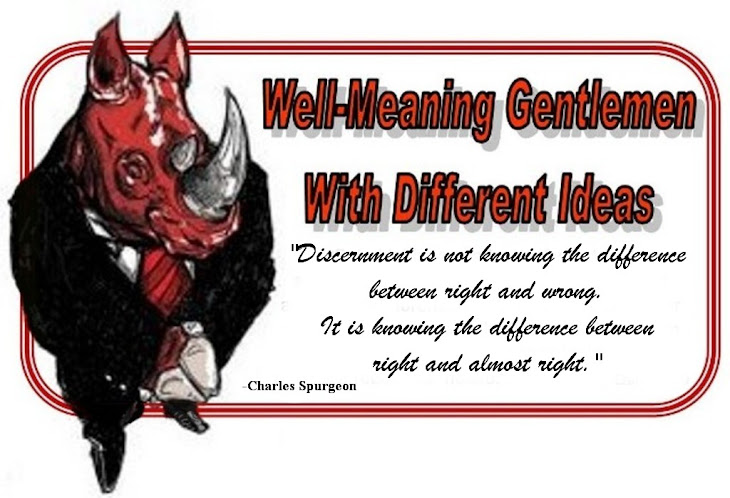With nearly 20 years combined experience as an officer or director in two non-profit Christian ministries, there have been a few occasions where questions of ethics and practices came alarmingly close to home. And I have learned that the law can and sometimes does hold all the officers of an organization, including churches, collectively and personally responsible for actions of individuals in the organization. Knowledge with wisdom about that fact frankly keeps me in a state of healthy fear. Someone once asked me, “If you are not going to learn from your mistakes, what’s the point in making them?”
So I was interested in a local story that broke recently in my town that might be worthy of cautious concern to anyone in church or parachurch ministries. There are several lessons to be learned.
In brief, a local charter school is now under Grand Jury investigation for some pretty serious charges that may or may not be illegal but the allegations are rooted in the “appearances of impropriety.” It is interesting that the term, appearance of impropriety, has its roots in the Bible. It is from I Thessalonians 5:22 “Abstain from all appearance of evil.” So what happened?
One of the principle characters is a man known to me and with whom I have served on another board in the past. He is a very likable person, well-known and active in the community, and he has a passion for the multiple non-profit organizations he serves. And, I believe that, in this case, his practices, his activities, his interests, and his intentions were always for the well-being and benefit of the school. Yet, many people around him were often conflicted by, what one letter writer called, “funny business.”
Ironically, he is very knowledgeable and astute in laws and ethics as they pertain to not-for-profit organizations in California. In fact, the very issues that resulted in this current investigation, were of great concern in another not-for-profit organization where, under his leadership, they were distracted for several months by some similar concerns over some alleged unethical activities of a former board member. Even though the accusation proved to be unfounded and without substance, that organization took deliberate actions then to create “at arm’s length” policies and procedures to protect their employees and directors from the possibility of any “appearance of impropriety.” In short, this man knows “where the rocks are.”
So, back to the story - The man is currently serving and has served on the board of directors at the charter school for a number of years. He is also the president and CEO of another non-profit benevolent organization. The accusations in this case can be broadly summarize around the school board’s alleged misdealings or the possibility of “self-dealing” regarding contract arrangements that may have unfairly or questionably inured to his own benefit or that of his family, and his other non-profit organization. It is possible, and maybe even likely that the contracts were reasonable or even a bargain to the school; that’s not the issue; it is not illegal to establish contracts with officers or directors. There are recognized, legal conflicts of interest. In most cases, those arrangements can be expedient and good for organizations. The question is, how should those arrangements be negotiated so that the officers, directors and the organization itself are protected?
A brief review of the news article revealed these several varied and disconnected charges about some of their practices:
- Board members failed to recuse themselves from votes that benefited themselves or their families.
- The board awarded contracts among themselves without seeking bids thereby excluding other qualified vendors the opportunity to compete.
- The board engaged in “bid splitting,” a practice whereby goods or services are divided into several processes in order to keep the total amounts under the threshold that would normally require a different action or higher accountability.
- When other bids were invited, the board member who was competing had the unfair advantage of seeing and then underbidding the competition.
- Board members were allowed to vote on their own reappointments.
- There was an allusion to possible violations of the “Brown Act.” That has no direct affect on churches but the underlying principle is that the board possibly acted in secret and without transparency.
I am sure that I do not need to rehearse all of the specifics about this case in order to point out some potential dangers. But I do want to make just a few general, random observations and comments for the benefit of anyone involved in church or non-profit ministry leadership:
- The origination of this major firestorm can be traced back to a couple small, seemingly insignificant flashpoints that may be related. The first came from a “disgruntled” employee(s). But further in the article, it was revealed that the board of directors decided to dissolve a “troublesome” advisory board that was established and required in its charter documents. The week after the story appeared in print, two opinion letters were printed in the newspaper from some of those disgruntled people. There is a lesson to be learned here. Officers, directors, boards and fiduciary managers must not disrespect, ignore, marginalize, insult or attempt to quiet the people or the organizations to whom they are accountable. Once the people begin to sense that happening, they begin to question the practices of the leaders.

2. These kinds of problems tend to escalate into a feeding frenzy. Once their suspicions were aroused; once the sharks smelled fresh meat, they tore indiscriminately into every little thing they could find. Although there are some serious accusations under investigation, there is also a myriad of seemingly petty, nonsensical, and irrelevant issues piled on. None of them would warrant any serious jury investigations but now, everything is under scrutiny.
3. When the credibility of leadership is doubted and the confidence is eroded, it is hard to restore. The school board’s chairman issued a statement saying the school operates in “an open and transparent manner so that the public trust in the school will remain strong.” The problem with that statement is that it closed the barn door after the horse escaped. Now the school is clean. Now there are no current contracts with the board member or other organization in question. Now there is added accountability that has been forced upon them. Now they have finally addressed some long-standing deficiencies. But, in spite of the assurances, the public trust has been eroded and the resulting damage was the impetus to finally force the board to make necessary corrections.
4. It is easier to avoid these problems before they happen than it is to make corrections after the damage is done. In the case of the charter school (and possibly the other non-profit by association) the actions that led to the investigation will result in mandated audits of their business and fiscal practices. In addition, there will be, by mandate, an outside representative in attendance at all board meetings to ensure accountability. There is a parallel here for our instruction. From time to time, most organization’s constitutions and policies are amended or crafted usually to respond to or correct problems or abuses whether real or imagined to ensure accountability. Whenever a governing body loses the faith or confidence of the organization it serves, trouble will come and structural changes that may or may not be right are likely to result.
It is always a shame when a good community non-profit benevolent organization comes under this kind of scrutiny for questionable practices. When it happens to a church, it is a reproach to Christ.![]()

No comments:
Post a Comment